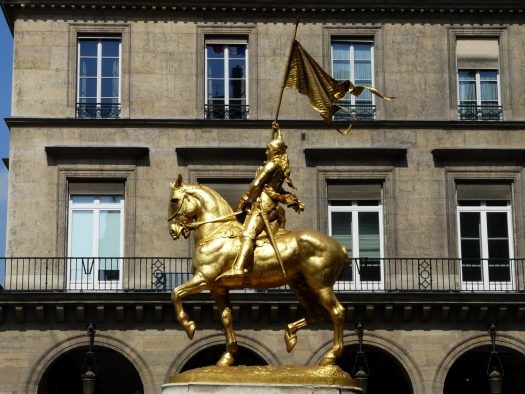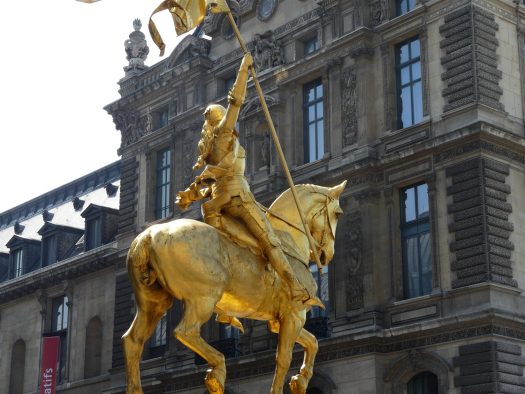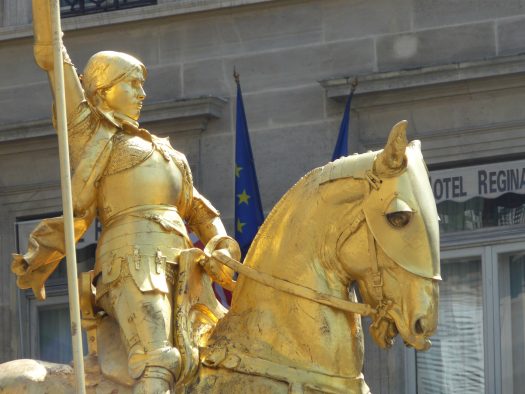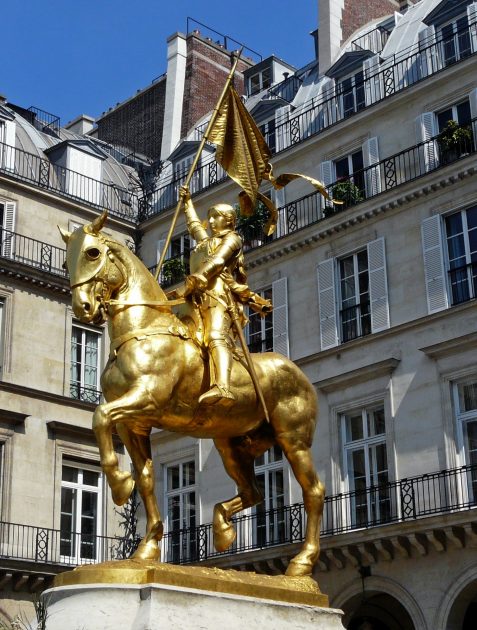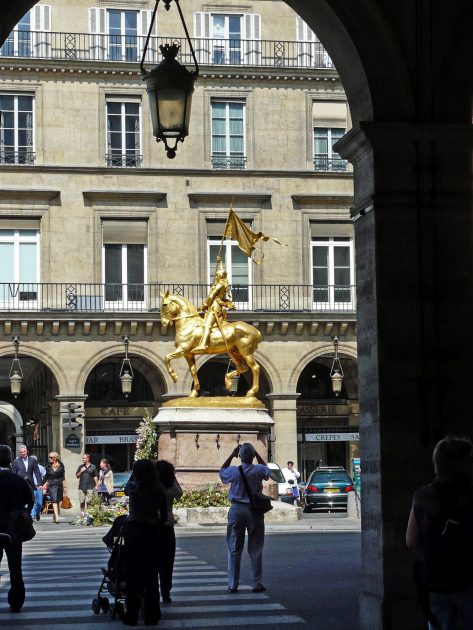There are few people in the world with as many equestrian statues as Jeanne d’Arc. In total there are 37, of which 28 are in France and 9 in other countries. 15 of these are originals (14 in France and 1 outside France), the other 22 are replicas.
There are a number of reasons why there are so many statues of Jeanne d’Arc. First, she is seen as the liberator of France and accordingly is a national heroine. Second, she is one of the patron saints of France. Third, she is one of the patron saints of soldiers, and therefore often part of war memorials. Lastly, the story of her short life is very inspiring for artists.
In 1874, Napoleon III commissioned the equestrian statue of Jeanne d’Arc that would become the best known. The statue was intended to help re-establish French self-confidence following their humiliating military defeat by the Prussian army in 1870. A commission was given to Emmanuel Frémiet to make a monument for the Place des Pyramides in Paris. Once completed, Frémiet, a true perfectionist, was not satisfied with his work. He thought the horse was not to the same scale as the rider.
In 1889, the City of Nancy requested a replica of the statue. This gave Frémiet the opportunity to reduce the size of the horse and to make a few other changes, including adding a muzzle to hide the horse’s head and removing the harness around the rear.
When, in 1899, the Paris statue was under threat from ongoing underground repairs to the street, Frémiet brought the sculpture back to his studio and began fixing his mistakes. He made Jeanne 20 cm taller, made the horse’s neck thinner, changed the forehead and removed the rear harness. One therefore could argue that the statue on the Place des Pyramides is not the original one, but a copy of the ones he made for Nancy and Philadelphia in 1889. The change did not go unnoticed, creating a stir among the people of Paris and his peers, who believed that an artist should never modify a work already displayed in public. It is said that the bronze of the original statue was used in 1903 to cast the replica in Mirecourt.
Following the canonization of Jeanne d’Arc in 1920, the Paris statue became, and still is today, a place of pilgrimage for the royalist and traditionalist parties of France.
